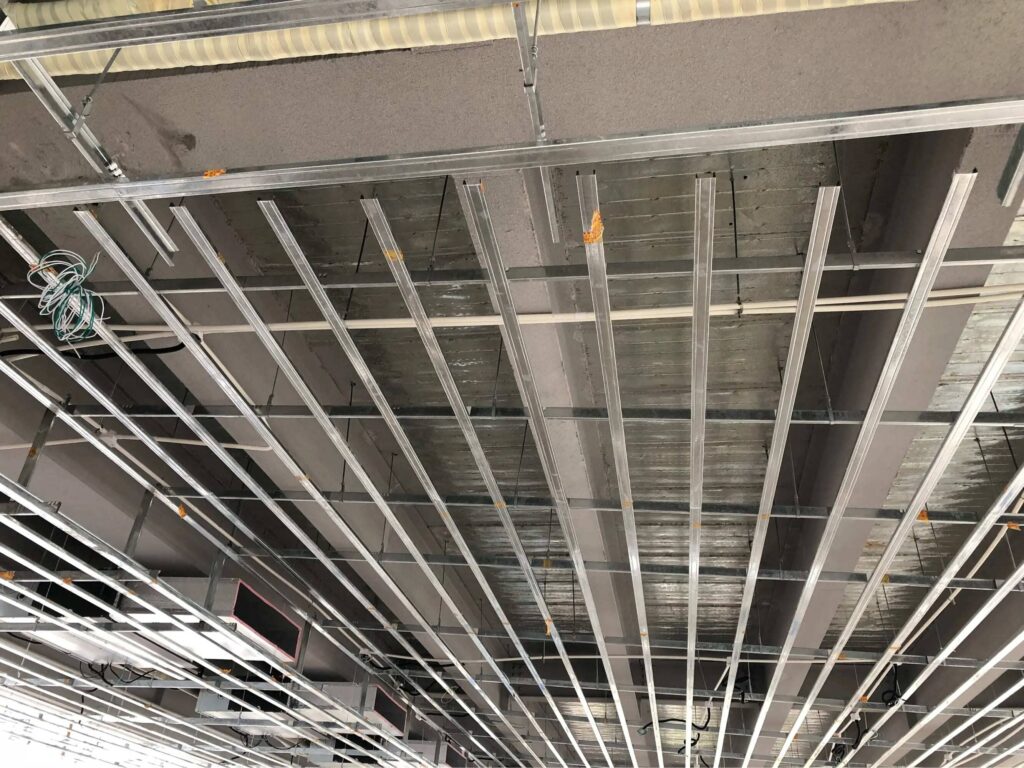
Ceilings play a crucial role in creating aesthetic appeal while concealing wire chaos and enhancing the visual harmony of the property. In addition, they work marvelously to conceal light belts or local spaces that require extra attention.
However, our ceilings come with their fair share of problems, such as vulnerability to cracks. As the dimensions of the rooms vary widely, we need to select suitable ceiling materials and carefully consider their installation heights. By following these guidelines, we can enhance the aesthetics of our suites while also ensuring structural integrity. Aesthetically appealing and structurally sound ceilings are indeed a perfect blend.
Essentially, there are three notable factors to consider during ceiling installation – floor height, key installation considerations, and prevention strategies for common but critical pitfalls. Let’s delve deeper into these aspects now.
When considering office layout, floor elevation is an important aspect that is often overlooked. Standard commercial ground clearance is between 2.6 and 2.8 meters, although any variation below this range warrants scrutiny. If your floor height drops below 2.5 meters, a substantial ceiling would be counterproductive for both productivity and morale. A cramped ceiling in a limited space can significantly contribute to discomfort and irritability. It is appropriate to respect the importance of flooring elevation in maintaining a comfortable working environment.
Introducing a stylish and practical home decor tip – strategically placing a secondary roof circle in your favorite spot. This secondary roof, measuring approximately 10-18 cm across and 10-l8 cm from ceiling to base, provides hidden uplighting that highlights parts of the original ceiling with light blue paint. The result is an expansive and visually appealing look that adds another layer of sophistication to any room.
Personalizing the ceiling shape apart from the flooring dimensions can easily lead to misunderstandings. Some decorators opt for reflective surfaces like glass or mirrors in ceilings, inadvertently turning them into hiding areas. This makes regular cleaning efforts challenging. In addition, the use of neon lights as lighting fixtures is discouraged. Discreet use can create a sense of disorder, undermining the cozy ambiance inside your home.
In high ceilings, creative freedom extends beyond illumination. Design elements, including power cables, audio-visual gear, and hidden structures, are all fair game for experimental shapes such as arcs, circles, squares, and even specialty forms. The ceiling does not have to conform to a single plane either; designers can break it up into multiple sections, effectively reducing floor space by employing substantial ceiling surface areas.
In the field of ceiling design, a considerable focus is placed on materials and technologies that resist cracking. Ceilings made from steel profiles are gaining prominence in the industry due to their superior strength and durability.
Exposure to extreme indoor/outdoor temperatures can precipitate many problems within our built environment, with ceiling cracks being a common complaint. This often shows deficiencies in both the materials used and the execution of the construction process. As such, a well-defined approach to material selection and stringent site conditions are required for optimal results.
Discover how critical a problem poor quality building materials can be in ceilings. After all, a weak structural backbone can lead to stiffness problems that can escalate further into ceiling cracks and deformities. The cementitious substance of the ceiling, its layer covering, sewing thread, and hanging poles play important roles, each contributing to the overall stability of the frame. Take the steel pieces and hooks from the ceiling. For example, their inadequate stiffness and alignment may cause internal pressure resulting from mismatched tensions. In essence, choosing these components judiciously helps ensure a strong ceiling, enabling a safer construction experience for everyone involved.
In short, an unsuitable atmosphere contributes significantly to the deformation and cracking of suspended ceilings. A critical factor responsible for this is humidity, specifically the moisture that penetrates both plywood boards during their use phase. As the plates absorb moisture through construction, they gradually desiccate over time, causing them to contract, and thus develop cracks. To mitigate this problem, reducing atmospheric humidity levels during construction, and ensuring adequate ventilation are paramount. In addition, we recommend that concrete be allowed to reach its intended moisture content before commencing work to avoid future complications. It’s a simple, yet essential step towards maintaining the integrity of your ceiling system!
If you notice a crack in your new home’s ceiling, take immediate action by reaching out to your decorator for a warranty repair. The typical warranty process involves post-decoration maintenance checks throughout the seasons. This ensures that weak spots in the structure are addressed before they lead to costly problems such as ceiling cracks. Remember, vigilance is key!

